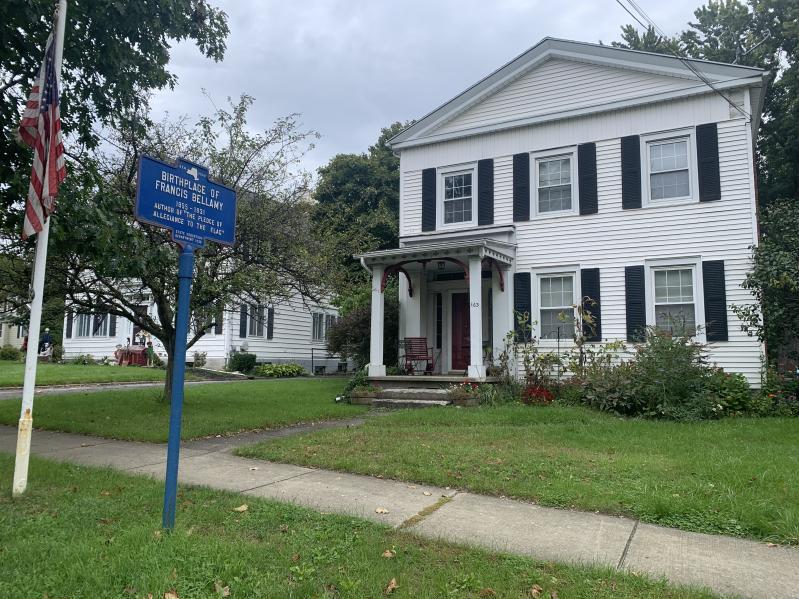Who knew where the name came from? The Allegiance Bed & Breakfast of Mount Morris, New York, “upstate” to us Long Islanders but really mostly due west, the route ducking in and out of the northern reaches of Pennsylvania, where once upon a time a border sign greeted motorists with the audacious sentiment “America Starts Here.” In fact, any farther west and you’d find yourself in the land of beef on weck, that glorious mess of a regional (read: Buffalo) sandwich.
So, the Allegiance. Maybe the inn’s owner is the retired president of an energy company? But then downtown you also find Allegiance Antiques, one of many such shops in Mount Morris, and you wonder.
We were there for a massive cross-country meet in the cornfields of Geneseo. “When you go for a walk,” the innkeeper said, “a few doors down is the Francis Bellamy house, the guy who wrote the Pledge of Allegiance. It’s not a big house,” he said, standing in the foyer of his three-story, eight-guestroom 1838 Federal-style mansion, made something else, Greek Revival maybe, with the later addition of huge columns out front, a White House writ smaller.
But even if he moved 150 miles east to Rome when he was still a child, circa 1860, it’s significant, and a fine house, Bellamy’s, in a village with no shortage of them, well used and still used, lived in by regular working folk, apparently, a couple of modest cars in the drive, which Bellamy would no doubt smile down upon, with his Christian socialist background. A Baptist minister’s son who took over a pulpit himself early in his career and yet pointedly left any reference to God out of his Pledge.
How quaint, patriots actually believed in the separation of church and state back then. The “under God” part was added later, of course, under Eisenhower, in a gesture meant to be reassuring to a country living in fear of the unbelieving Communist hordes, a not unfamiliar political mass hysteria.
“I pledge Allegiance to my Flag,” read Bellamy’s original 1892 version, said to have been written when he was in the employ of The Youth’s Companion magazine, “and the Republic for which it stands” (he added the “to” later), “one Nation indivisible,” and the rest.
The occasion was the World’s Columbian Exposition, the 400th anniversary of the explorer’s arrival, and it turns out Bellamy was instrumental in making Columbus Day a national holiday. Those were different times.
Now, close followers of American history will have noted a New York Times article earlier this year calling into question Bellamy’s hand — the Pledge in fact may have been written by a kid in Kansas who submitted it to The Youth’s Companion.
No one really knows. But legend, public relations, and the complicated, even shifting, nature of truth, that’s the American way too.

